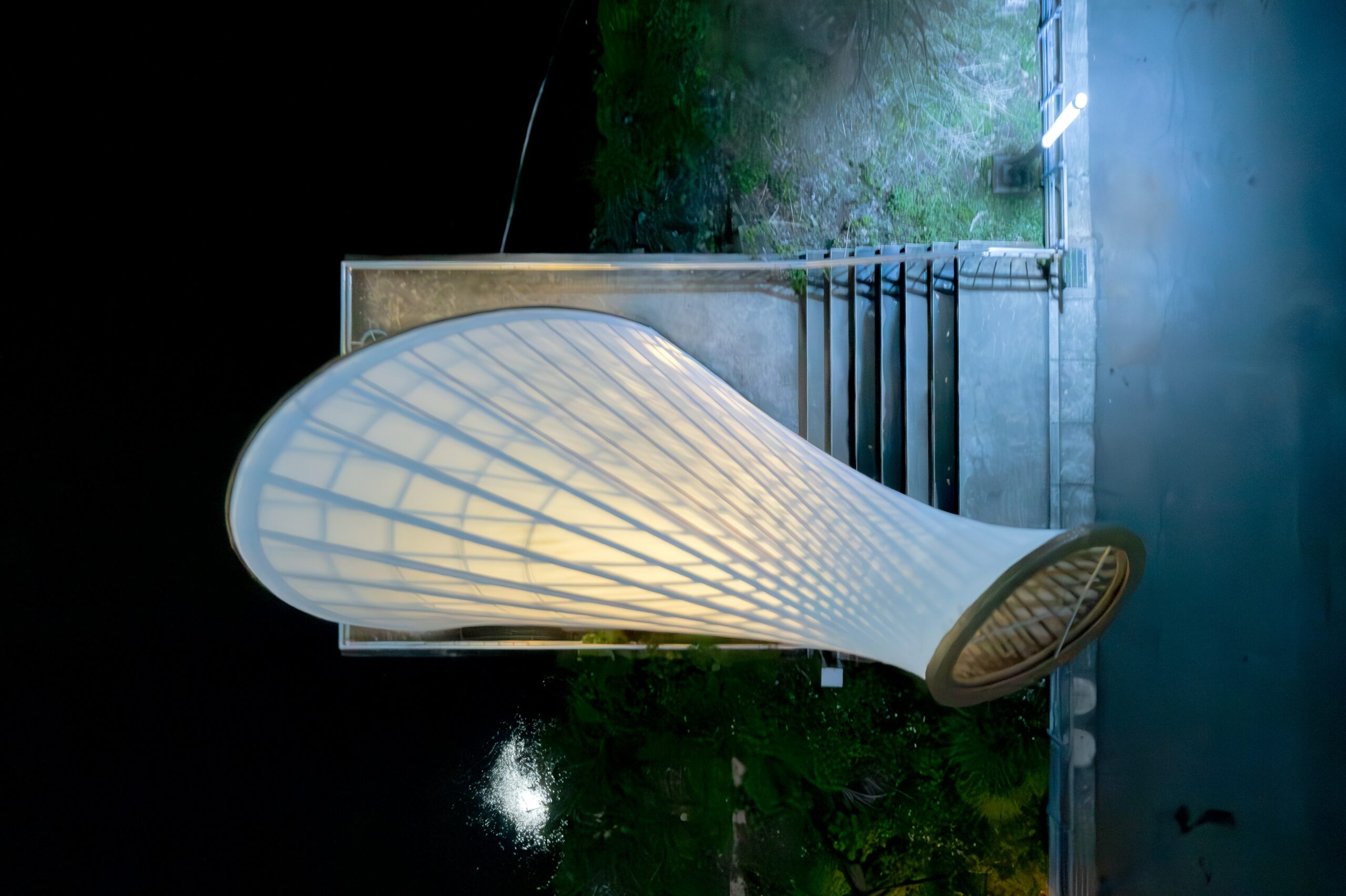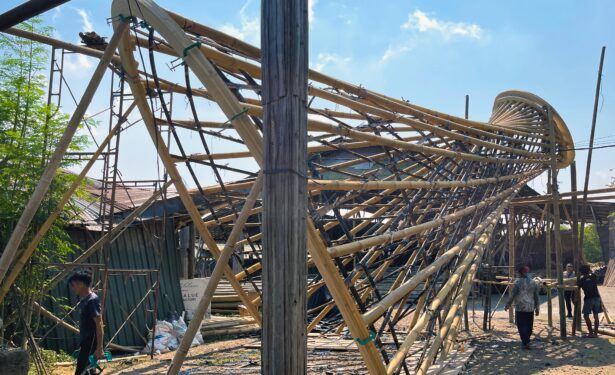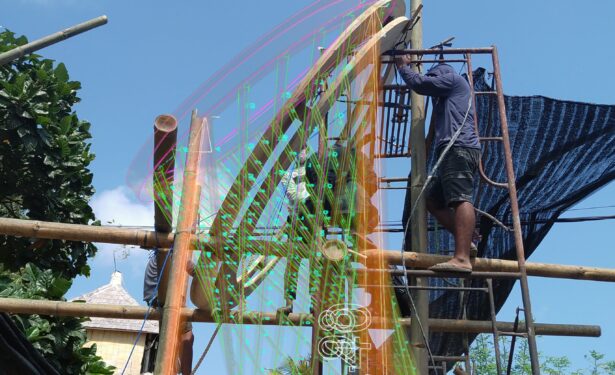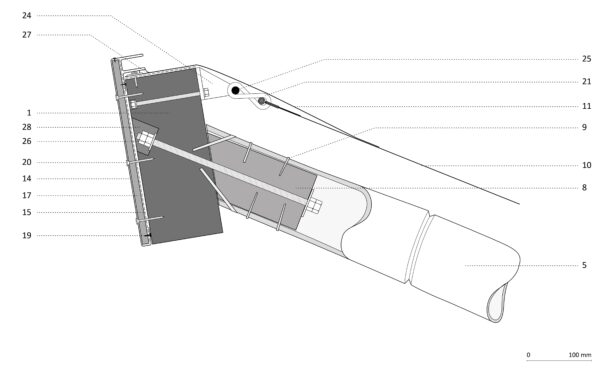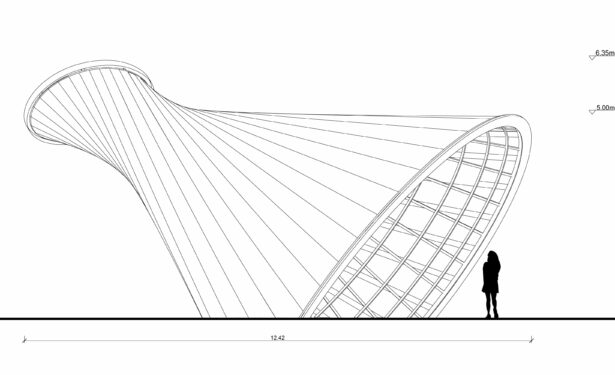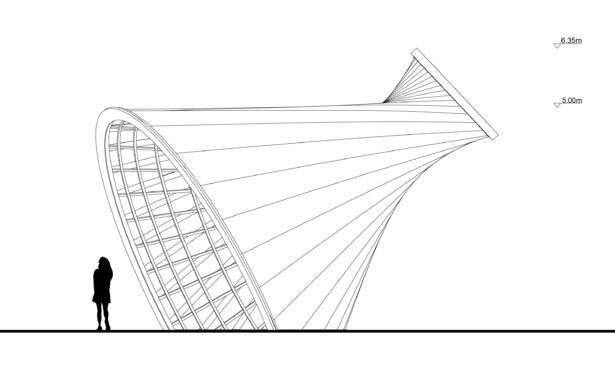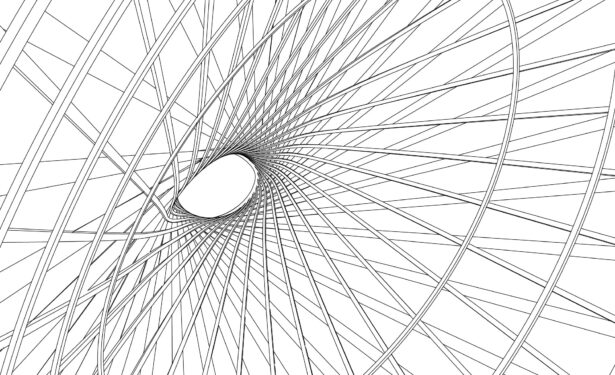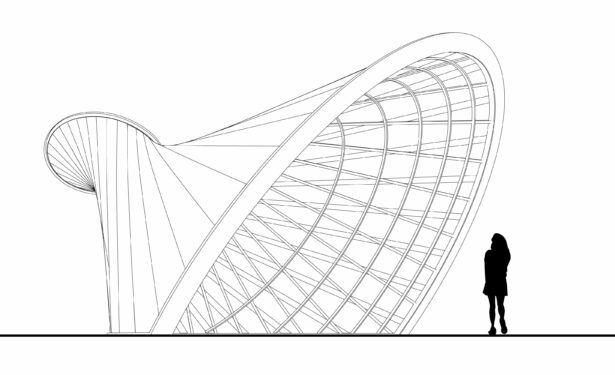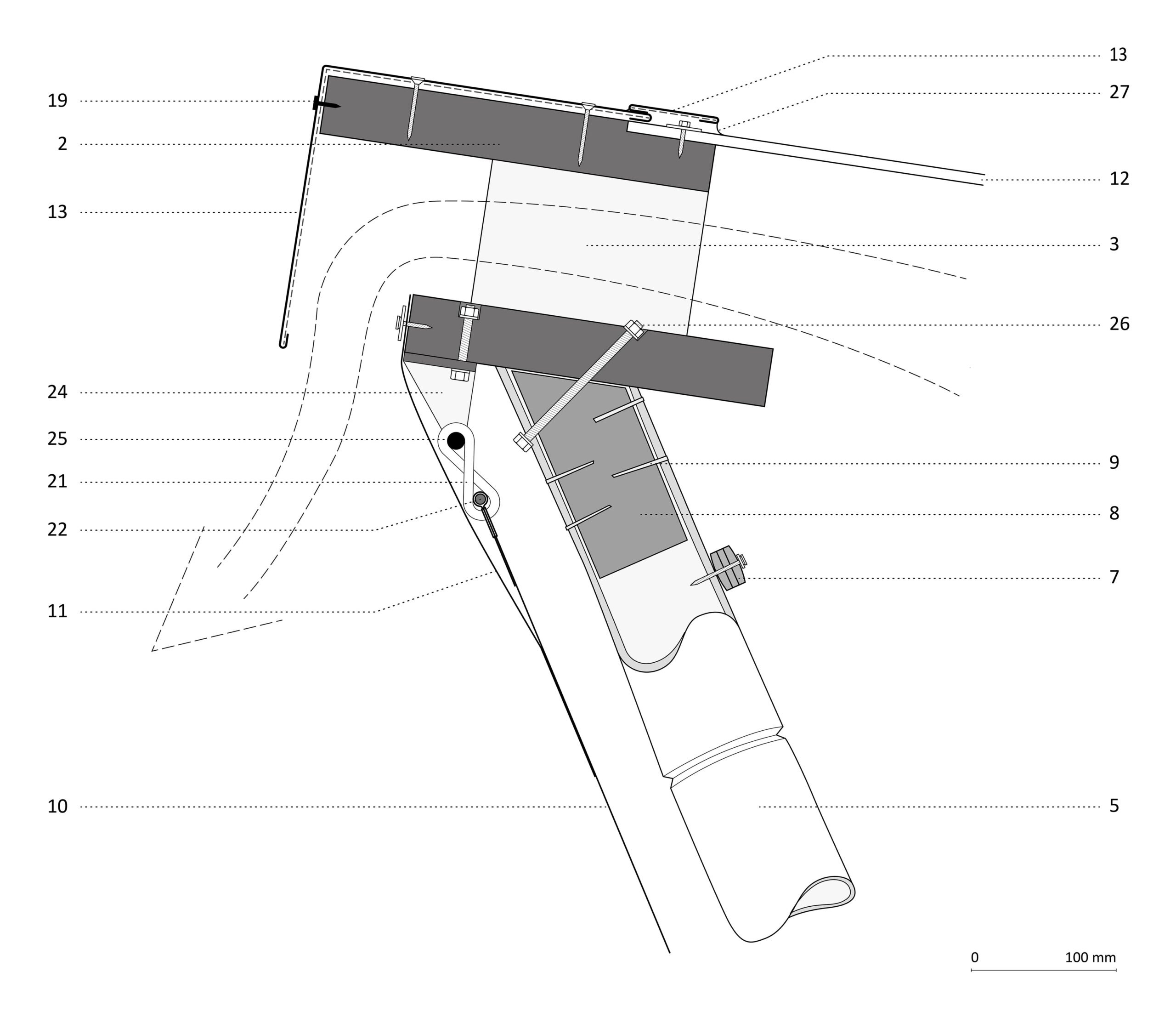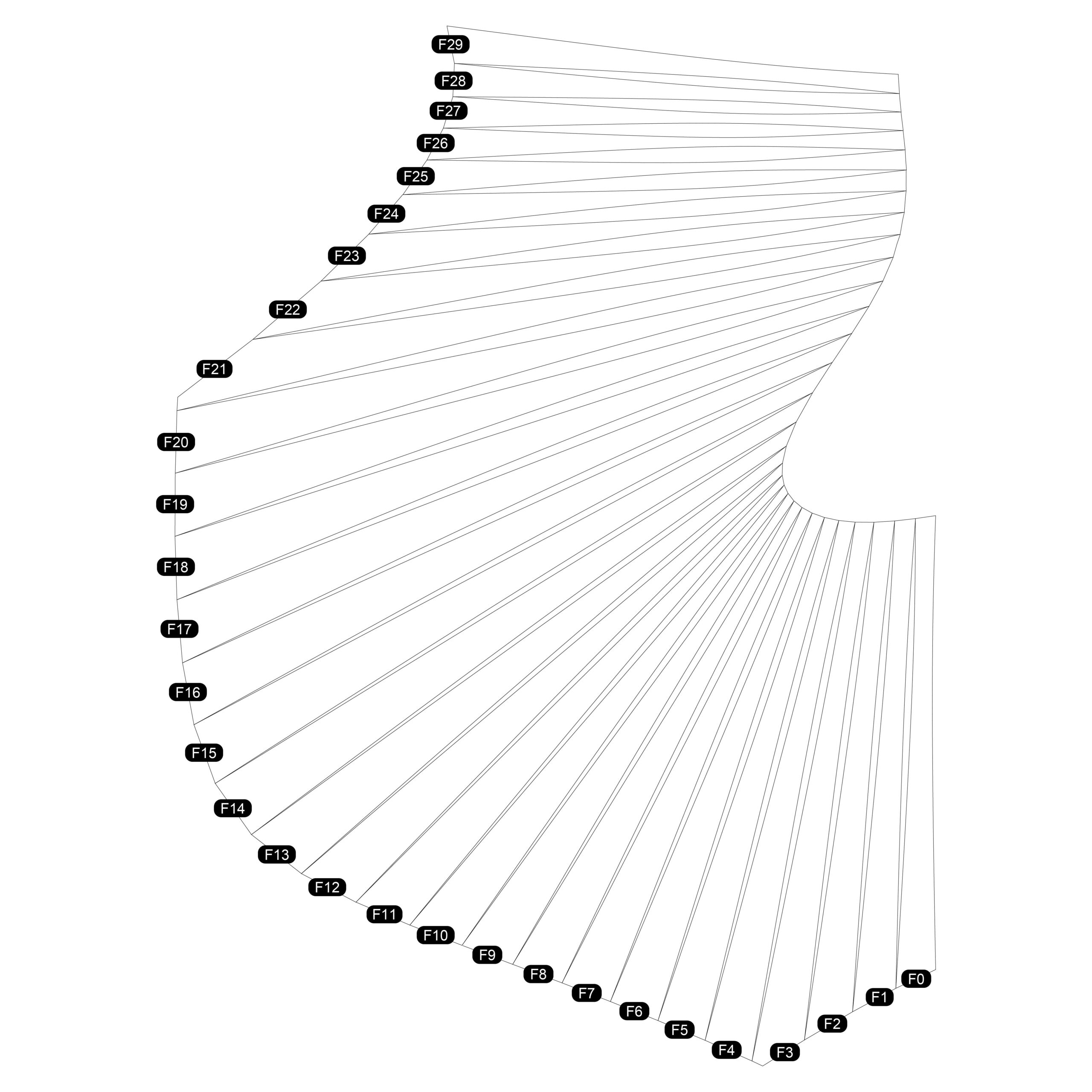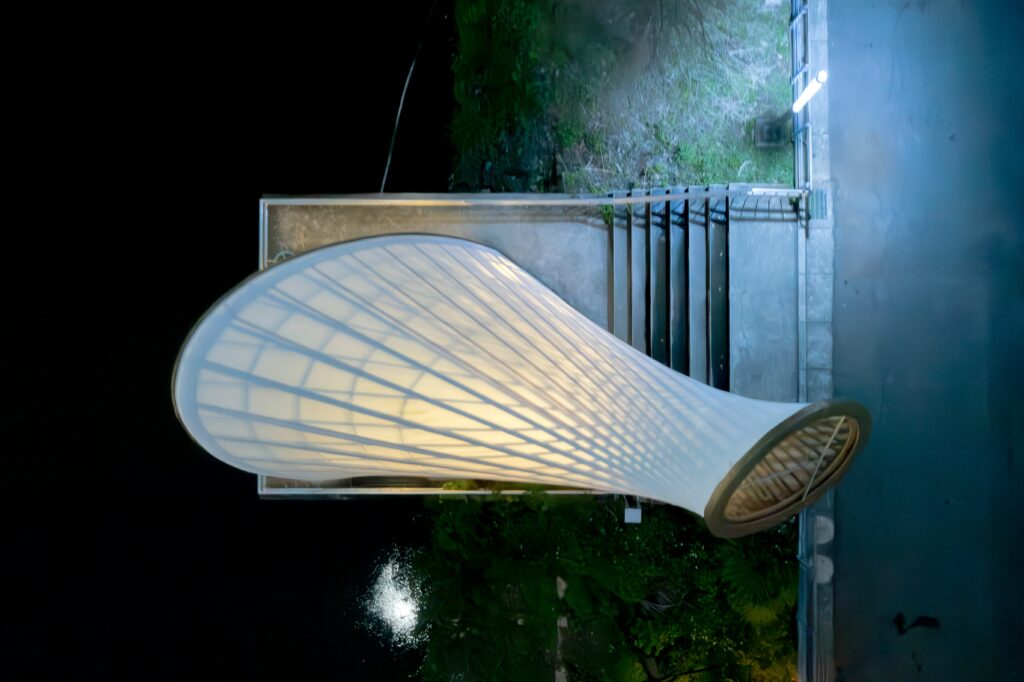

- 5 September 2024
- 195 defa okundu.
MemutAR
MemutAR is a design research exhibition project at National Yang Ming Chiao Tung University in Hsinchu, Taiwan, blending sustainable bamboo craft and modern technology, prefabricated and assembled with AR technology.

MemutAR is a design research exhibition project featuring an elegant bamboo pavilion, nested next to a beautiful little lake at a University Campus in Hsinchu, Taiwan.
It demonstrates that the limited global availability of specialised bamboo artisanry, a requirement for the increased use in contemporary architecture of this most sustainable construction material, can be overcome through strategic incorporation in the design and construction process of parametric design tools, Augmented Reality (AR) technology, and global distribution networks.


MemutAR is built from 29 large, treated, golden-brown-coloured Petung Bamboo culms (Dendrocalamus Asper) that twist together to form a tilted hyperbolic paraboloid geometry.
This shape is trimmed off by edge beams made from glue-laminated split Petung Halus bamboo.


The structure is covered by a tailormade, white, translucent, glass fibre-reinforced polymer membrane.
An oculus at the top brings in daylight and creates, with the bamboo pattern, a unique focal point inside that starkly contrasts with the elegant white exterior outlines of the pavilion geometry.


MemutAR was prefabricated by highly specialised Balinese artisans and re-assembled in Taiwan by a standard local contractor.
AR technology was used throughout to holographically guide in-situ actions.
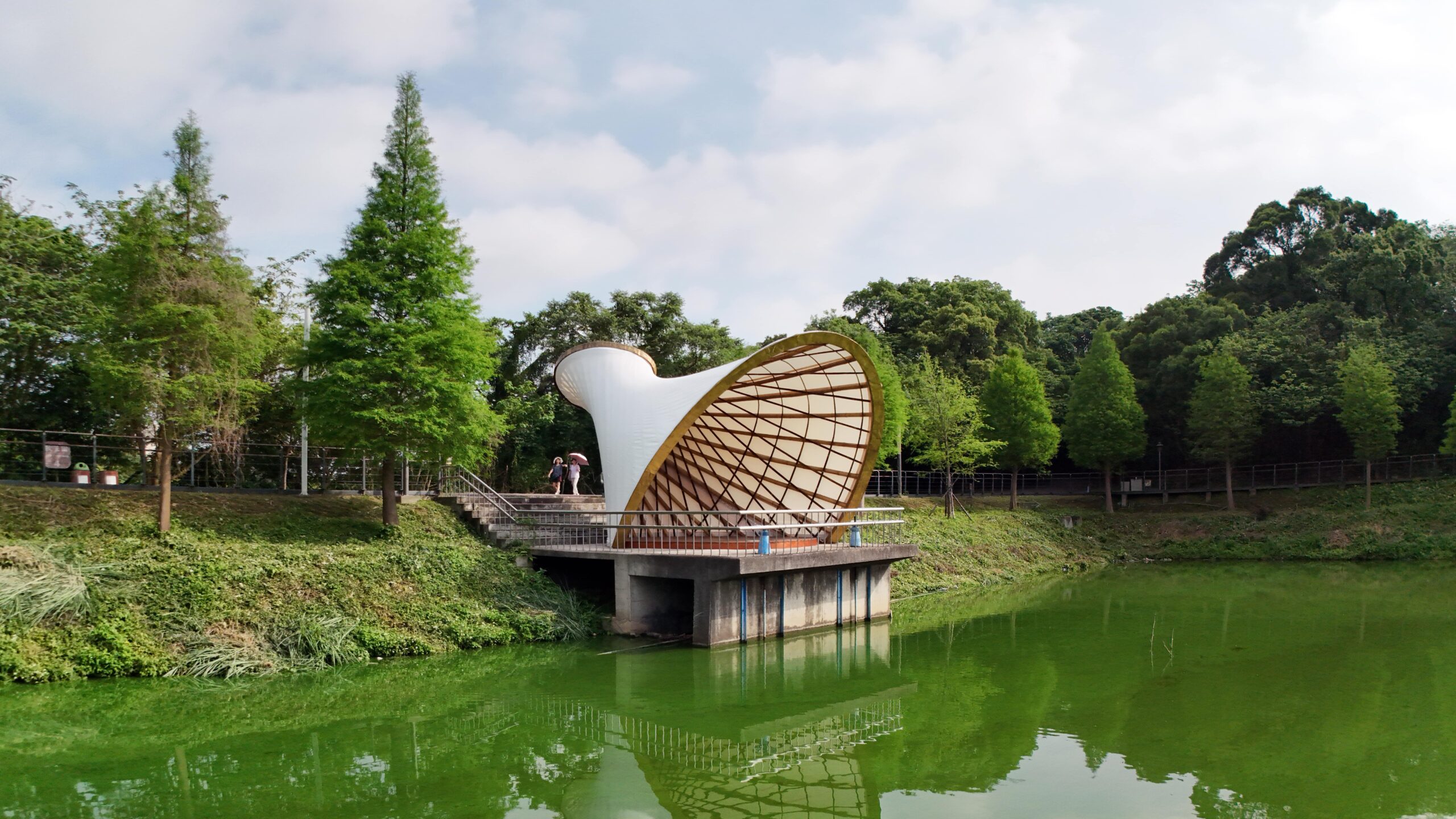

MemutAR shows that the use of high-end bamboo skill, currently concentrated in only a few highly specialised places globally, can be scaled up and exported overseas with ease, thanks to the convenience of prefabricated parts shipped directly to local building contractors.
With this proof of concept in place, the technology can now be applied for not only geometrically complex feature projects, but also standard buildings, like small houses built at low cost by local communities.


The name “MemutAR” is a word play on the Indonesian verb “memutar” and the acronym “AR”.
Memutar translates to rotate, turn, spin, swivel, swing, revolve, twirl, and twiddle, which is clearly represented in the pavilion’s dynamic geometry.


But “memutar” also means to put into circulation, and to transplant, which reflects the pavilion’s production lifecycle, where it is first prefabricated in Bali and then shipped overseas for reassembly.
By capitalising the letters “AR” in “MemutAR”, the name highlights the fact that AR technology was used for its fabrication, assembly, and reassembly.


In Hsinchu, the pavilion’s educational function is to demonstrate the power of bamboo and traditional crafts in combination with latest technologies.
Used now as a relaxing spot for meditation, it could easily be built elsewhere as a beach bar, pool house, bamboo forest bedroom, musical performance stage, or more.


Visitors to the exhibition can experience AR technology first-hand by using a bespoke app on their handheld mobile devices to visualise construction components or possible infills of the waterside pavilion at full scale.
MemutAR represents a milestone in the integration of latest cutting-edge technology into sustainable architecture that utilises natural materials and traditional local artisanry.


The tectonic system is turned into a gridshell by anchoring the culms using a cross-directional series of treated, split, black-coloured Petung splits.
This combination of locally available limited and overseas specialised skill enabled the straightforward construction of a non-standard space and geometry.


Etiketler










